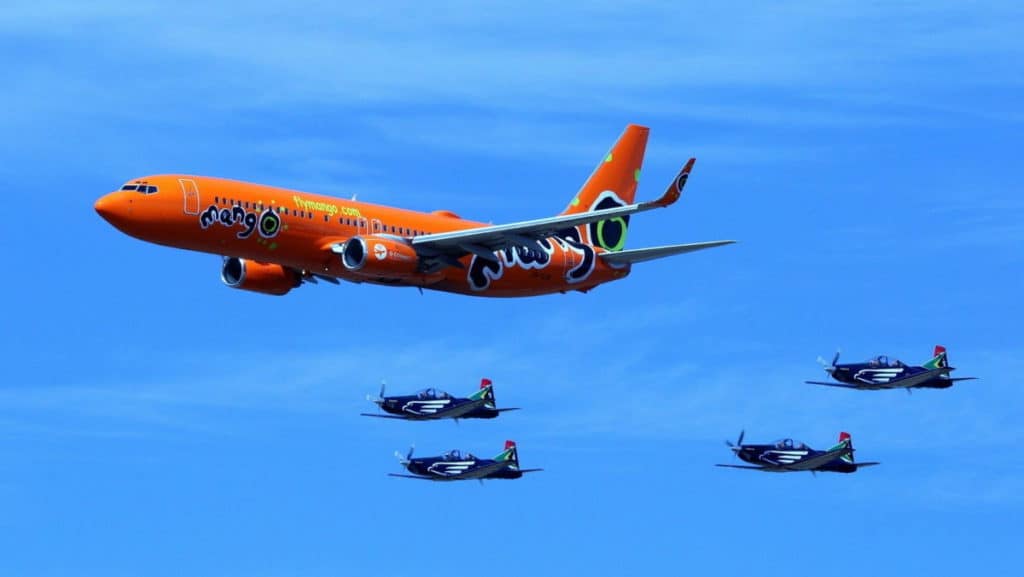
If you have ever seen an air traffic controller’s radar screen you must be wondering how the heck all those aircraft are flying and not hitting each other?! I was baffled just the same until I became a pilot and learned the true science behind it.
Depending on the aviation rules a pilot is flying under they will use their eyesight to ‘See & Avoid’ other aircraft when flying under Visual Flight Rules, or when flying under Instrument Flight Rules they will be guided by an air traffic controller to ensure traffic separation when unable to see.
To find out more about the simple and technical ways pilots avoid each other please read on and let me tell you how I do it as a full-time pilot…
There are two sets of rules that a pilot must follow depending on the type of flying they are doing. These rules are VFR and IFR:
Flight Rule #1 – VFR
VFR stands for Visual Flight Rules.
As the name implies, the pilot flying the aircraft will navigate using visual reference to the earth’s surface or horizon using their own eyes. This is the simplest form of flying and generally, flights associated with VFR are training flights, general aviation, tours, and pleasure flights.
Aircraft used for these flights generally do not have any instrumentation which can display nearby airborne traffic. Hence, pilots flying VFR constantly have to monitor the local air traffic radio frequency and keep a lookout for other aircraft nearby.
A good pilot, who is listening to the radio will always build an imaginary picture of the area in their mind and know where the traffic is within that mental area. This is known as Situational Awareness.
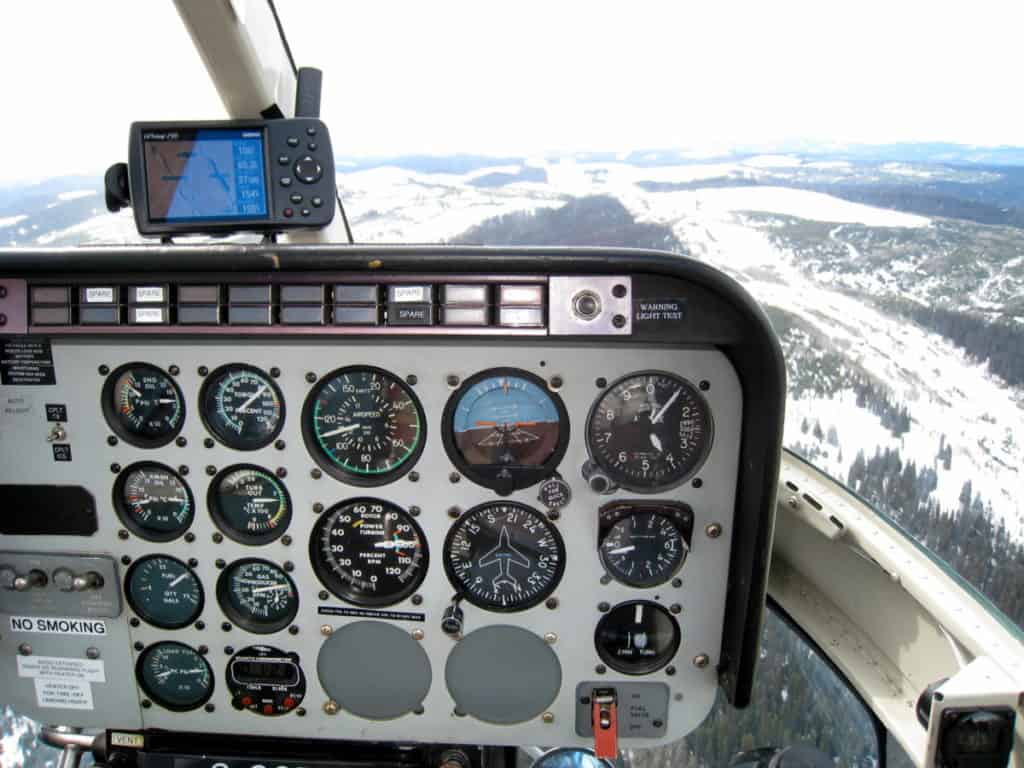
It is the pilot’s responsibility to visually see and avoid other aircraft while under VFR. By talking on the radio with other pilots in the same vicinity it allows everyone to steer clear of one another when outside of the airspace surrounding an airport.
When within the airports’ airspace, communication with the air traffic controller (ATC) will help provide a better level of traffic separation, but the pilot still must be responsible for see & avoid even when in communication with ATC.
During the day, spotting another aircraft is relatively easy, especially when the pilots give position reports over the radio. At night, however, pilots need help to identify each other. This is where lights mounted on the aircraft that are mandatory and must be used come to help:
Position Lights
These sets of lights are equipped on all aircraft and are standardized worldwide. They include 3 different colors:
- A Red light on the left side of the aircraft
- A Green light on the right side of the aircraft
- A White light on the tail of the aircraft
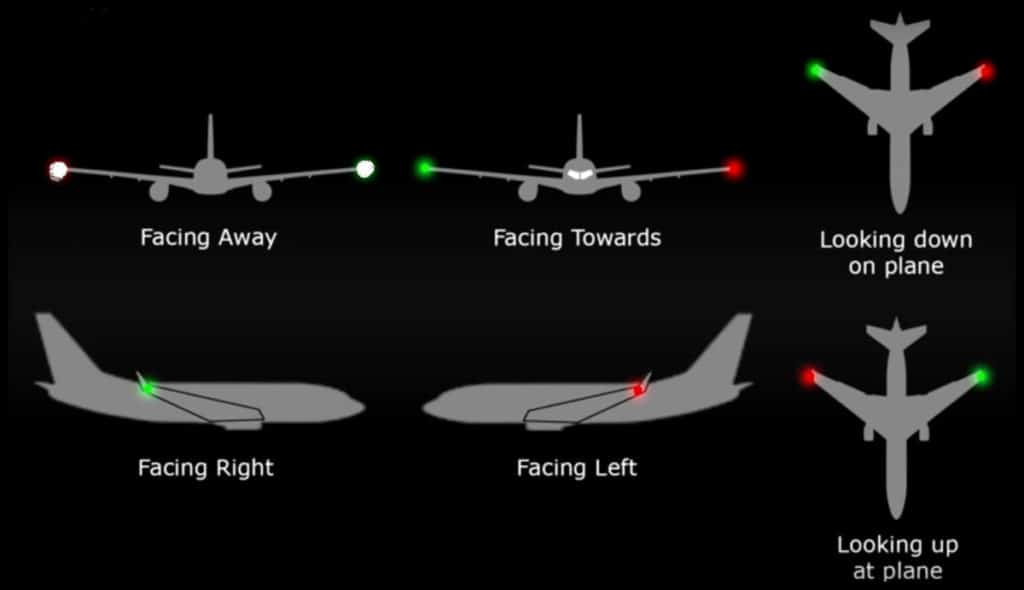
When looking for other aircraft at night a pilot can ascertain the direction another aircraft is flying depending on the configuration of lights they see. To understand how they help, let’s take a few scenarios:
- An aircraft is passing you on your left side, you will see a only red light
- An aircraft is overtaking you on your left side, you will see a only green light
- An aircraft is coming straight towards you, you will see both a red and green light
- An aircraft is flying away from you, you will see only a white light.
This light configuration makes it easy once the pilot can physically see those lights, but over a city full of lights it is darn near impossible to pick out the constantly-lit lights on a moving aircraft. To help, aircraft have a second light/s installed known as the Strobe or Anti-Collision Light.
Learn More…
Try These Articles:
* Can Airplanes Land In Fog? A Pilot Tells All!
* How Do Pilots Know When To Descend?
Anti-Collision Light
The Anti-Collision light is a single light or series of lights that either flash very bright white or red. The flashing or strobing action of these lights allows other pilots to pick up aircraft using their peripheral vision much easier, especially over a well-lit city.
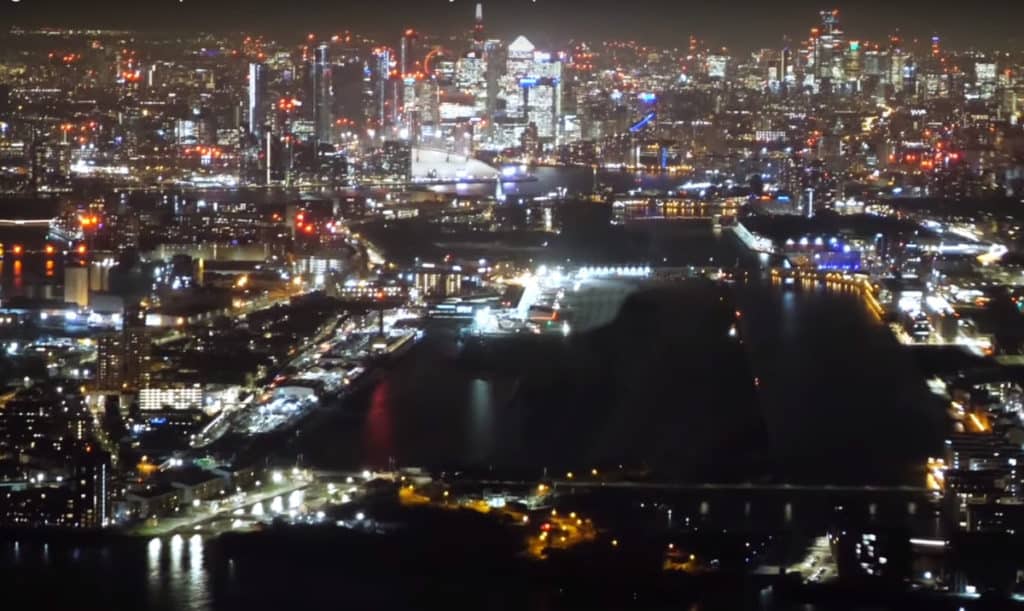
Once a pilot has located an aircraft by means of its strobe light they can then look for the combination of position lights to ascertain which way that aircraft is flying and if any course corrections are required to ensure separation is maintained.
Try it for yourself. Next time you are outside at night, try looking for an aircraft and see which type of light you see first – I bet it will be its strobe!

Join My Newsletter & Get Great Tips, Information and Experiences To Help You Become a Superb Pilot!
Flight Rule #1 – IFR
IFR stands for Instrument Flight Rules.
As the name implies, the pilot is flying the aircraft using its cockpit instrumentation. This type of flying allows pilots to fly in complete darkness with no celestial or city lighting and in reduced visibility like clouds, fog, smoke, and haze.
IFR is what all the major airlines, cargo jets, business jets, and larger private aircraft fly under. When operating under IFR pilots are unable to see out of the windows due to the meteorological conditions and so are guided by an air traffic controller who is the one responsible for maintaining separation between aircraft.
To help keep track of each aircraft, the air traffic controller will issue the pilot a 4 digit ‘Sqwark Code’ that they input into the transponder of the aircraft. The transponder passes information to the airport’s radar every time it is scanned.
This information is then presented to the air traffic controller via a screen in front of them with each aircraft showing the following information:
- Aircraft Call Sign
- Position
- Direction of Travel
- Altitude
- Airspeed
- Vertical Speed
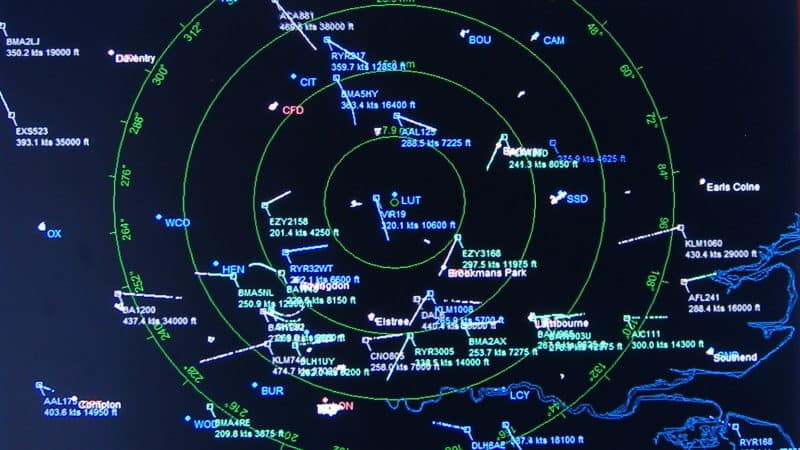
With each sweep of the Radar, the aircraft on the controller’s screen moves in real-time. Based on this information the air traffic controller is able to assign pilots varying altitudes, airspeeds to fly at or turn them by giving them a Vector to keep them separated from other air traffic around them.
For Example:
Controller – “EZY2158 Turn Right Heading 350°“.
Pilot of EZY2158 -“Turn Right Heading 350°, EZY2158“.
The pilot will then bank the aircraft to the right and roll out flying straight ahead on 350°.
This overwatch is how the pilots are able to fly in zero visibility. To help pilots also form a mental picture of where other aircraft are, especially when flying in areas with no air traffic controller there is a device called TCAS which is fitted to most IFR-capable aircraft.
TCAS – Traffic Collision Avoidance System
The Traffic Collision Avoidance System uses the aircraft’s transponder to transmit its position to any nearby aircraft. Simultaneously, it receives data from any other nearby aircraft. The system constantly monitors the separation between two or more aircraft in the form of time (minutes/seconds away from each other), and in the form of lateral/vertical/longitudinal units.
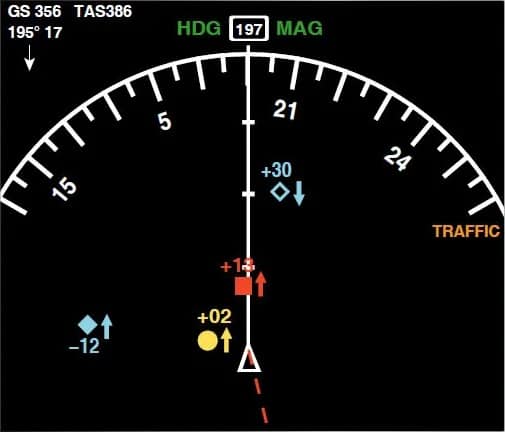
TCAS Symbol Key:
- White Outlined Triangle – Your aircraft
- Red Square – RA – Aircraft 1,300 ft above and climbing
- Yellow Circle – TA – Aircraft to your left, 200 ft above and climbing with you in the same direction
- Blue Filled Diamond – Proximate Traffic – Aircraft to your left 1,200 ft below and climbing with you in the same direction
- Blue Outlined Diamond – Other Traffic – Aircraft ahead 3,000ft above and descending towards you
There are basically 2 versions of TCAS:
One which just shows the traffic advisory (TA), it displays the other aircraft’s data, shows the position of other aircraft, and leaves it to the pilot to decide to what action to take to maintain separation.
A newer version is the one that detects the traffic and gives traffic advisory (TA) and when crucial, also provides resolution advisory (RA). By resolution advisory, I mean that it verbally announces to the pilot to go left/right/climb/descend and these advisories have priority over the air traffic controller’s command.
In other words, whenever a situation arises where ATC asks the pilot to go left, and TCAS gives a RA to go right, the pilot will have to go right. This helps pilots avoid each other in the event of a mistake by an air traffic controller.
Learn More…
Try These Articles:
* Birds: How Do Pilots Avoid Them?
* How Do Pilots Know Where to Taxi Around an Airport?


